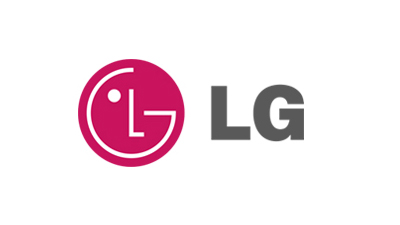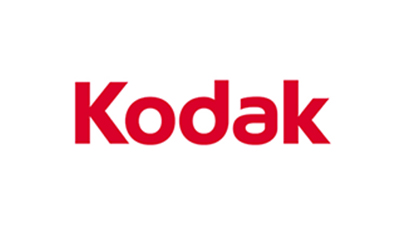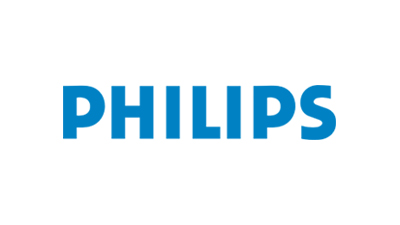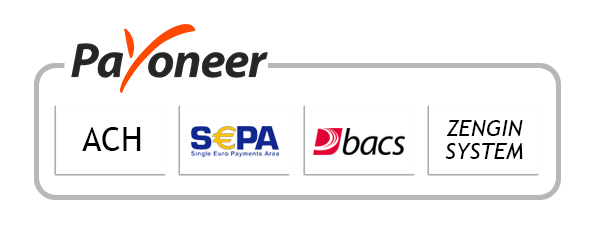
-
Report ID 138296 -
Published Date September 2024 -
Delivery Format PDF/PPT/Word -
Editor's Rating
-
Report Details
Report Overview
The global Chiplets Market is projected to grow significantly, with an estimated value of USD 107.5 billion by 2033, up from USD 3.7 billion in 2023. This represents a robust compound annual growth rate (CAGR) of 42.10% over the forecast period from 2024 to 2033.
Chiplets are a revolutionary approach to semiconductor design and manufacturing, where different components of a microprocessor are built separately and then assembled. This modular approach allows for more efficient use of silicon, as each chiplet can be optimized for its specific function, leading to overall improvements in performance, power efficiency, and cost-effectiveness. The chiplets market has gained traction as demands for more powerful and energy-efficient computing devices continue to grow.
The demand for chiplets is primarily driven by the need for more sophisticated computing power and smaller device footprints in various industries. As technology evolves, particularly in areas such as artificial intelligence, 5G communications, and high-performance computing, the limitations of traditional monolithic chip designs become more apparent. Chiplets offer a scalable solution that can meet these complex requirements without the exponential cost and design challenges associated with traditional approaches.
The chiplets market is experiencing significant growth, fueled by the semiconductor industry’s shift towards more modular and flexible design paradigms. This growth is further supported by major semiconductor companies investing heavily in chiplet architectures to stay competitive. The ability of chiplets to reduce time-to-market for new technological advancements plays a crucial role in this growth, as does their capacity to overcome yield challenges associated with larger chip designs.
There are substantial opportunities within the chiplets market, particularly in terms of innovation in network connectivity and processing power. The modular nature of chiplets allows for rapid iteration and customization, which is ideal for emerging technologies that require specialized capabilities. Additionally, the development of universal standards for chiplet integration promises to open up new avenues for collaboration and product development across different sectors, enhancing the interoperability and functionality of chiplet-based systems.
According to Semiconductor Engineering report, chiplets represent an innovative approach to constructing system-on-chips (SoCs). By breaking down the chip into smaller, discrete elements and linking them through a standardized interface, chiplets enable designers to tackle challenges related to performance, power consumption, size, and cost, particularly in the emerging technologies like 5G/6G, AI, and VR. This modular design strategy not only enhances the flexibility of chip design but also significantly improves yields and reduces manufacturing costs by over 45%, according to some estimates.
Key Takeaways
- The global Chiplets market is anticipated to experience substantial growth, reaching an estimated USD 107.5 billion by 2033, up from USD 3.7 billion in 2023. This growth corresponds to a compound annual growth rate (CAGR) of 42.10% during the forecast period from 2024 to 2033.
- CPU Chiplets maintained a dominant position in the market in 2023, capturing over 41% of the market share. Their prominence is attributed to their efficiency and enhanced processing capabilities, while also maintaining energy efficiency.
- The Consumer Electronics segment led the market in 2023, with a share exceeding 26%. This dominance is driven by the rapid technological advancements in devices such as smartphones, laptops, and wearables, where chiplets provide critical flexibility and scalability.
- In 2023, the IT and Telecommunication Services segment held a significant share of more than 24%. This is primarily due to the increasing demand for high-performance computing solutions in data centers and the necessity for efficient network infrastructure.
- The APAC region emerged as a leading force, securing over 40% of the market share. This is largely due to its advanced semiconductor manufacturing capabilities and rapid technological progress.
- North America holds a substantial portion of the Chiplets market, with approximately 29.8% of the global market share.
- The European market also plays a crucial role, accounting for about 20.9% of the market share, with significant contributions from Germany, the UK, and France.
- Further solidifying its position, the Asia-Pacific region dominates the global landscape with a market share of 40.5%, driven by key technological contributions from China, South Korea, and Taiwan.
- Although smaller in scale, Latin America holds a market share of 5.7%, indicating gradual growth within the chiplets sector.
- Representing an emerging market, the Middle East and Africa region holds a market share of 3.1% in the chiplets industry, showcasing its potential for growth.
Chiplets Market in APAC
In 2023, the Asia-Pacific (APAC) region firmly established itself as a leader in the global chiplets market, capturing a dominant share of over 40%. This significant market presence translates to an estimated revenue of approximately USD 1.2 billion from chiplets alone, underscoring the region’s pivotal role in this rapidly evolving industry.
The dominance of APAC in the chiplets market can be attributed to several key factors. Primarily, the region benefits from a robust semiconductor manufacturing infrastructure, with major tech hubs in countries like Taiwan, South Korea, and China driving innovation and production. These countries are home to some of the world’s leading semiconductor companies, which have been quick to adopt and integrate chiplet architectures to meet the growing demands for more efficient, high-performance computing solutions.
Furthermore,APAC nations are heavily investing in research and development activities related to chiplets, aiming to overcome the technical challenges associated with integrating multiple semiconductor devices into a single functional unit. These investments are not only enhancing the performance and efficiency of chiplet-based solutions but are also fostering innovation that contributes to the global competitiveness of the APAC chiplets market.
Several crucial factors contributed to the Asia-Pacific (APAC) region’s dominant position in the chiplets market:
- Advanced Manufacturing Capabilities: The Asia-Pacific region’s leading stance in the 2023 chiplets market, holding over 40% market share, is largely due to its advanced semiconductor manufacturing capabilities. Nations like Taiwan, South Korea, and China are home to some of the world’s largest semiconductor foundries and design facilities. These facilities are equipped with cutting-edge technologies essential for the production of chiplets, which require precision and innovation in integration techniques. The region’s commitment to continuous improvement in manufacturing processes ensures that it remains at the forefront of chiplet technology.
- Strong R&D Investment: Research and development (R&D) are pivotal in the APAC region’s dominance in the chiplets market, with investments channeling into solving some of the most complex challenges associated with chiplet design and functionality. Enhanced funding and supportive government policies have fostered an environment ripe for innovation, particularly in developing new methodologies for integrating diverse semiconductor components effectively. These R&D activities position APAC as a hub of innovation in semiconductor technology.
- Strategic Industry Collaborations: Strategic partnerships between APAC’s semiconductor firms and global technology leaders have significantly contributed to the region’s market strength. These collaborations are vital for technological exchange and market expansion, allowing APAC companies to access advanced technologies and broader markets. Furthermore, such collaborations often lead to the development of customized chiplet solutions tailored to specific industry requirements.
- Market Demand and Technological Advancements: Finally, the rapid growth in demand for consumer electronics, telecommunications, and computing products in APAC has spurred the region’s chiplets market. As devices become more sophisticated, the need for compact, efficient, and high-performance components like chiplets grows. The region’s ability to quickly adapt to market needs and integrate technological advancements into mass production is a key driver of its sustained leadership in the global market.
North America holds a commanding presence in the chiplets market, with a 52.5% share, marking it as a key leader in this technology. This significant market share reflects the region’s robust semiconductor industry, characterized by advanced research facilities and a strong focus on technological innovation. The presence of major technology giants and startups specializing in microelectronics and nano-engineering further drives North America’s prowess in chiplet development.
In Europe, the chiplets market is also substantial, holding a 50.3% share. This robust figure is supported by Europe’s comprehensive industrial and technological infrastructure, which promotes extensive research and development in semiconductor technologies. European firms are particularly focused on sustainability and efficiency, driving advances in chiplet designs that reduce power consumption and enhance performance, making them ideal for use in green technologies and IoT devices.
Latin America is showing a strong competitive edge in the chiplets market with a 48.6% share, indicating rapid growth and adoption within the region. This growth can be attributed to increased investments in telecommunications and consumer electronics, sectors that are rapidly embracing chiplet technology to meet the demand for more efficient and compact devices. Latin America’s strategic focus on in these areas positions it well for further expansion and influence in the global chiplets market.
The Asia-Pacific region leads with the highest regional market share at 54.6%, primarily due to its vast manufacturing base. The region’s dominance is bolstered by the extensive production capabilities of countries like China, South Korea, and Taiwan, which are home to some of the world’s largest semiconductor manufacturing firms. These firms leverage cutting-edge technologies to produce high-quality, innovative chiplet products at scale, catering to both local and global demands, thereby solidifying APAC’s leadership in the market.
The Middle East & Africa region holds a considerable market share of 39.8%, demonstrating significant growth potential. This emerging market is increasingly investing in new technologies as part of broader economic diversification strategies, particularly in areas like technology parks and smart city projects, which utilize advanced semiconductor components such as chiplets. The region’s strategic geographic location and improving technical expertise attract international partnerships and investments, enhancing its capacity to grow further in the chiplets market.
Type Analysis
In 2023, the CPU chiplets segment held a dominant market position, capturing more than a 41% share of the global chiplets market. This significant market share is indicative of the pivotal role CPU chiplets play in modern computing, serving as the core processing units in a wide array of electronic devices from personal computers to complex servers in data centers.
The prominence of CPU chiplets in the market can be attributed to their ability to efficiently manage multiple processing tasks simultaneously, which is critical in the era of multi-threading and parallel processing. As the demand for high-performance computing continues to rise in sectors like cloud computing, artificial intelligence, and large-scale data analytics, the need for advanced CPU chiplets has become paramount.
Moreover, the adaptation of CPU chiplets allows manufacturers to achieve higher yields and lower costs compared to traditional monolithic CPUs. By integrating smaller, discrete chiplets that can be individually optimized and tested, manufacturers are able to minimize the impact of defects on a single large chip, thereby enhancing overall production efficiency and reducing waste.
The future growth of the CPU chiplets segment is expected to be driven by ongoing innovations in semiconductor technology, such as the development of more sophisticated interconnect technologies that can enhance the speed and efficiency of chiplets-based systems. As industries continue to push the boundaries of what’s possible with technology, the role of CPU chiplets is set to expand, providing ample opportunities for stakeholders in the chiplets market to innovate and grow.
Application Analysis
In 2023, the Consumer Electronics segment held a dominant market position, capturing more than a 26% share of the global chiplets market. This significant market share underscores the critical role that chiplets technology plays in the development and enhancement of consumer electronic devices, such as smartphones, tablets, and wearable technologies.
The appeal of chiplets in consumer electronics is largely due to their ability to enhance device performance while maintaining the physical size of the electronics. As consumer demands for faster, more powerful devices continue to escalate, manufacturers are leveraging chiplets to meet these expectations without the cost and design complexities associated with larger, monolithic chips. Chiplets enable a more modular approach to design,like improved graphics processing units (GPUs) and artificial intelligence (AI) capabilities into consumer devices.
Additionally, the versatility of chiplets facilitates rapid innovation cycles in the consumer electronics market. Manufacturers can update individual components without redesigning the entire system, significantly speeding up the time-to-market for new technologies and features. This is particularly valuable in a market characterized by fierce competition and rapid product obsolescence.
Looking ahead, the consumer electronics segment is poised for continued growth in the chiplets market as emerging technologies such as augmented reality (AR) and virtual reality (VR) become more mainstream. These technologies require high processing power and low energy consumption, which chiplets can provide. Therefore, the ongoing advancements in chiplets technology are expected to play a pivotal role in shaping the future landscape of consumer electronics, making devices more powerful, efficient, and compact.
End-User Analysis
In 2023, the IT and Telecommunication Services segment held a dominant market position within the chiplets market, capturing more than a 24% share. This substantial market share reflects the critical importance of chiplets in supporting the infrastructure and service demands of modern IT and telecommunication systems, which are foundational to digital connectivity and data management across the globe.
The integration of chiplets in IT and telecommunication infrastructure plays a crucial role in enhancing the performance and efficiency of data centers, network systems, and telecommunications equipment. Chiplets enable these systems to manage vast amounts of data and complex processing tasks more efficiently.This is particularly important as the volume of data traffic and the complexity of network operations continue to grow exponentially, driven by trends like cloud computing, Internet of Things (IoT) connectivity, and 5G deployment.
Furthermore, chiplets offer significant scalability advantages that are vital for the rapidly evolving telecommunication sector. As networks expand and upgrade to accommodate higher data rates and lower latency, the modular nature of chiplets allows for more flexible and cost-effective enhancements to processing capabilities. This modularity ensures that telecommunications providers can offer the latest technological advancements without a complete overhaul of existing infrastructure, thus minimizing downtime and deployment costs.
Key Market Segments
Type
- CPU Chiplets
- GPU Chiplets
- Memory Chiplets
- Networking Chiplets
- Sensor Chiplets
Application
- Consumer Electronics
- Data Centers
- Automotive
- Industrial
- Healthcare
- Other Applications
End-User
- Telecommunications
- IT and Telecommunication Services
- Automotive
- Healthcare and Life Sciences
- Consumer Electronics
- Other End-Users
Key Regions and Countries
North America
- US
- Canada
- Europe
- Germany
- France
- The UK
- Spain
- Italy
- Russia
- Netherlands
- Rest of Europe
Asia Pacific
- China
- Japan
- South Korea
- India
- Australia
- Singapore
- Thailand
- Vietnam
- Rest of APAC
Latin America
- Brazil
- Mexico
- Rest of Latin America
Middle East & Africa
- South Africa
- Saudi Arabia
- UAE
- Rest of MEA
Market Dynamics
Drivers: Adoption of High-Performance Computing (HPC)
The chiplet market is experiencing substantial growth, driven primarily by the escalating demand for High-Performance Computing (HPC). As computational requirements surge in data centers, artificial intelligence (AI) applications, and cloud computing, chiplets have emerged as a vital technology enabling the construction of powerful and efficient processing units.
Traditional monolithic chips, while still essential, are increasingly unable to meet the performance and power efficiency needs of modern computational workloads. Chiplets, on the other hand, allow for a modular approach, where different chiplets can be combined to create custom solutions tailored to specific applications.This modularity is particularly beneficial for HPC, where the need for rapid data processing and parallel computing is paramount.
By integrating chiplets with high bandwidth memory (HBM) and other specialized components, manufacturers can achieve significant improvements in computational speed and energy efficiency. This capability is especially crucial for AI workloads, where massive data sets must be processed in real-time. Furthermore, the ability to mix and match chiplets from different manufacturers allows for greater flexibility and innovation in system design, further fueling the adoption of this technology in the HPC sector
Restraint: Interconnection Complexity
While the chiplet market is poised for growth, it faces significant challenges, particularly concerning the complexity of interconnections between chiplets. Unlike monolithic integrated circuits, where all components are fabricated on a single die, chiplets require intricate packaging and interconnect technologies to function as a cohesive unit. This complexity introduces several technical hurdles, including signal integrity issues, latency, and power management concerns.
The need for robust and reliable interconnects is critical, as any failure in these connections can lead to reduced performance or even system failure. Additionally, the industry currently lacks standardized interconnect solutions, which complicates the design and integration process.
Each chiplet must be carefully designed and tested to ensure compatibility with others, increasing the overall cost and time required for development. Moreover, the need for advanced packaging technologies, such as 2.5D and 3D integration, adds another layer of complexity, requiring significant investment in research and development to overcome these challenges
Opportunities: Advancements in 5G Technology
The ongoing rollout and advancements in 5G technology present a significant opportunity for the chiplet market. 5G networks demand highly efficient, low-latency processing capabilities to manage the massive amounts of data generated by connected devices.
Chiplets are well-suited to meet these demands due to their ability to be customized for specific functions, such as signal processing, data handling, and power management.As telecom operators and equipment manufacturers continue to deploy 5G infrastructure, the demand for chiplet-based solutions is expected to rise. These solutions can be tailored to optimize performance for specific 5G applications, such as edge computing, which requires processing power to be distributed closer to the data source.
This capability is particularly valuable in scenarios where latency is critical, such as autonomous vehicles and industrial automation. The ability to rapidly adapt to new requirements through modular chiplet designs gives companies a competitive edge in the fast-evolving 5G market
Challenge: Scalability and Security Concerns
The scalability of chiplet-based systems and their associated security concerns present formidable challenges to the market’s growth. As chiplets become more prevalent, the ability to scale these systems efficiently while maintaining performance and security becomes increasingly important.
Scalability issues arise from the need to integrate multiple chiplets, often from different manufacturers, into a single system. This integration can lead to compatibility issues, as well as challenges in managing the overall system’s power and thermal characteristics.
Security is another significant concern, particularly as chiplets are increasingly used in critical applications, such as defense, finance, and healthcare. Each chiplet represents a potential attack vector, and ensuring the security of the entire system requires robust design and testing procedures.Furthermore, as chiplets are often sourced from multiple vendors, there is a risk of introducing vulnerabilities through supply chain attacks.
Growth Factors
- Support from Industry Consortia: The formation of industry consortia, such as the Universal Chiplet Interconnect Express (UCIe), is helping to standardize chiplet interfaces and promote interoperability. These efforts are reducing the complexity of chiplet integration and encouraging broader adoption, contributing to the market’s growth. As standardization efforts continue, the market is expected to expand even further.
- Cost-Effective Production: Chiplets provide a cost-effective alternative to traditional monolithic integrated circuits. By enabling the reuse of proven chiplet designs across different products, manufacturers can reduce development costs and time to market, which is particularly appealing in fast-evolving industries like consumer electronics and telecommunications.
- Customization and Flexibility: The modular nature of chiplets allows for greater customization and flexibility in system design. Manufacturers can mix and match different chiplets to create tailored solutions for specific applications, leading to increased adoption across various industries, including automotive, consumer electronics, and healthcare.
- Advancements in Semiconductor Manufacturing: Technological advancements in semiconductor manufacturing, including the development of 2.5D and 3D packaging, have made it easier to produce chiplets. These innovations allow for the integration of multiple chiplets in a single package, enhancing performance and reducing the overall footprint of electronic devices.
Emerging Trends
- Adoption of Heterogeneous Integration: Heterogeneous integration, where multiple chiplets with different functions and technologies are combined in a single package, is becoming a key trend. This approach enables the creation of more powerful and efficient systems, particularly in applications requiring high performance and low power consumption.
- Increased Focus on Security: As chiplets are integrated into more critical applications, security is becoming a paramount concern. There is a growing emphasis on developing secure design practices and robust testing methodologies to protect against potential vulnerabilities in chiplet-based systems.
- Expansion into Consumer Electronics: While chiplets have traditionally been used in high-performance applications, they are now making inroads into the consumer electronics market. The demand for compact and energy-efficient devices, such as smartphones and wearable technology, is driving the adoption of chiplets in this sector.
- Emergence of Chiplet Ecosystems: The development of chiplet ecosystems, where different companies collaborate to create compatible chiplets and integration tools, is becoming more prominent. This collaborative approach is expected to accelerate innovation and reduce time-to-market for new products.
Top Use Cases for Chiplets
- Edge Computing: As the demand for edge computing grows, chiplets are playing a vital role in delivering localized data processing capabilities. Edge devices, which operate closer to the data source, require high performance and low power consumption. Chiplets provide a flexible solution, allowing for the integration of various processing and storage units tailored to specific edge applications, such as smart cameras, IoT devices, and industrial automation systems.
- Military and Aerospace: Chiplets are also finding applications in military and aerospace systems, where performance, reliability, and security are critical. The ability to customize and optimize chiplet-based systems for specific functions makes them ideal for use in defense and aerospace applications.
- 5G and Telecommunications: The telecommunications industry, especially with the advent of 5G, relies heavily on chiplets to meet its high-speed, low-latency requirements. Chiplets allow for the integration of signal processing units, RF transceivers, and power management modules in a compact form factor. This capability is crucial for 5G base stations and network infrastructure, which must handle enormous data throughput while maintaining energy efficiency.
- Data Centers and AI Workloads: Chiplets are widely used in data centers to enhance the performance of servers and AI-driven applications. The ability to integrate high-bandwidth memory (HBM) with processing units makes chiplets ideal for handling the massive data processing requirements of AI workloads.
- Healthcare Devices: The healthcare industry is increasingly adopting chiplets in medical devices that require high precision and reliability. In portable medical devices, chiplets enable the creation of compact, energy-efficient systems that can perform complex tasks, such as monitoring vital signs or administering treatments, making healthcare more accessible and efficient.
Key Players Analysis
The Chiplets Market is rapidly growing, with several key players leading the way in innovation and development. Among them, Advanced Micro Devices Inc. (AMD) stands out as a pioneer. AMD has been at the forefront of adopting chiplet technology, using it to enhance the performance and efficiency of their processors. Their innovative approach allows for greater scalability and flexibility, making them a major player in this space.
NVIDIA Corporation is another significant contributor to the Chiplets Market. Known for its cutting-edge graphics processing units (GPUs), NVIDIA is leveraging chiplet technology to push the boundaries of what their hardware can achieve. This has enabled them to deliver powerful solutions for gaming, artificial intelligence, and data centers, solidifying their position as a market leader.
GLOBALFOUNDRIES is a key player known for its expertise in semiconductor manufacturing. By incorporating chiplet technology into its production processes, GLOBALFOUNDRIES is able to offer highly customizable and efficient solutions to its clients. This flexibility has made them a preferred partner for many companies looking to integrate advanced chip technologies into their products.
Xilinx Inc. is also making significant strides in the Chiplets Market. As a leader in programmable logic devices, Xilinx uses chiplet technology to create versatile and high-performance products. Their focus on adaptability and performance has allowed them to maintain a strong presence in various industries, from telecommunications to automotive.
Top Key Players
- Intel Corporation
- Advanced Micro Devices Inc. (AMD)
- Taiwan Semiconductor Manufacturing Company Limited (TSMC)
- NVIDIA Corporation
- Samsung Electronics Co. Ltd.
- GLOBALFOUNDRIES
- Xilinx Inc.
- Micron Technology Inc.
- Broadcom Inc.
- Qualcomm Incorporated
- Toshiba Corporation
- ON Semiconductor
- Other Key Players
Recent Developments
- In June 2023: Intel announced a partnership with Taiwan Semiconductor Manufacturing Company Limited (TSMC) to manufacture chips for Intel’s high-performance computing and graphics products. This collaboration aims to enhance Intel’s chip production capabilities and reduce its dependence on external foundries.
- In June 2023: AMD partnered with Hewlett Packard Enterprise (HPE) to drive sustainability in technology. This collaboration focuses on energy-efficient chip designs using chiplets, furthering AMD’s commitment to innovation and sustainability in chip development.
- In August 2023: NVIDIA collaborated with Google Cloud to provide advanced AI infrastructure for deploying large generative AI models. This partnership integrates NVIDIA’s advanced computing technology with Google Cloud’s AI capabilities, optimizing AI model deployments.
- In June 2024: At COMPUTEX 2024, Advanced Micro Devices Inc. (AMD) showcased its MI325X AI chip, which is 30% faster than NVIDIA’s H200. AMD’s continued partnership with TSMC, using their advanced 3nm processes, reinforces their commitment to leading in high-performance computing.
- In August 2024: Samsung Electronics introduced nanosheet transistors in their Galaxy Watch 7. These transistors are part of Samsung’s broader push into advanced semiconductor technologies, including chiplets, which are expected to enhance the performance of their consumer electronics significantly. Samsung’s strategy includes using chiplet technology to improve the efficiency and power of its devices.
- In April 2024: Toshiba launched a new series of power-efficient chiplets specifically designed for industrial automation. These chiplets aim to enhance performance while reducing energy consumption in automation systems.
-
Table Of Content
Research Insights & Deliverables
 Development and Future Forecast
Development and Future Forecast Competitive benchmarking
Competitive benchmarking Company Revenue Statistics
Company Revenue Statistics Rising Regional Opportunities
Rising Regional Opportunities Technology Trends and Dynamics
Technology Trends and Dynamics Technology Assessment
Technology Assessment
-
Inquiry Before Buying
Research Insights & Deliverables
 Development and Future Forecast
Development and Future Forecast Competitive benchmarking
Competitive benchmarking Company Revenue Statistics
Company Revenue Statistics Rising Regional Opportunities
Rising Regional Opportunities Technology Trends and Dynamics
Technology Trends and Dynamics Technology Assessment
Technology Assessment
-
Request Sample
Research Insights & Deliverables
 Development and Future Forecast
Development and Future Forecast Competitive benchmarking
Competitive benchmarking Company Revenue Statistics
Company Revenue Statistics Rising Regional Opportunities
Rising Regional Opportunities Technology Trends and Dynamics
Technology Trends and Dynamics Technology Assessment
Technology Assessment














